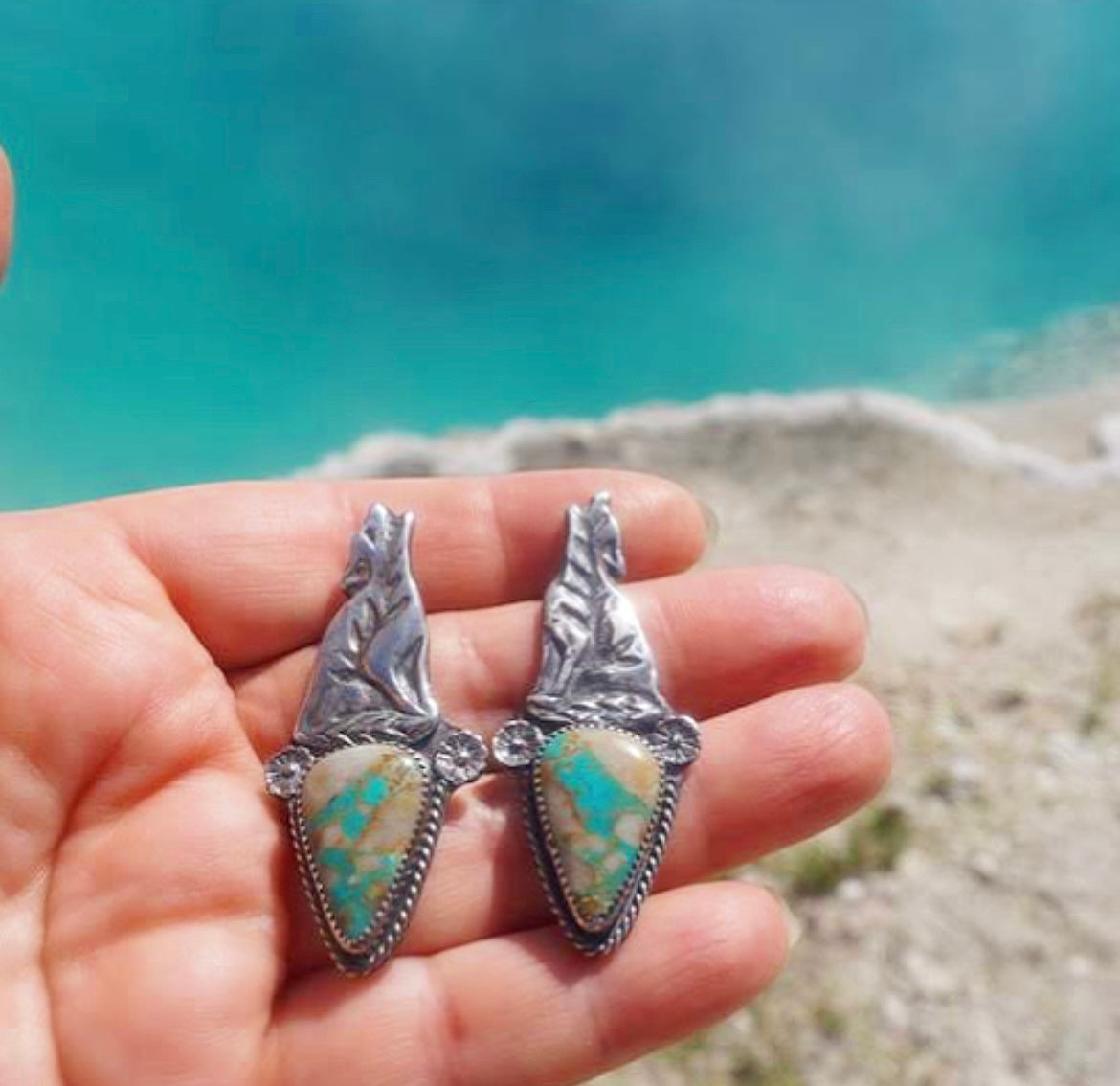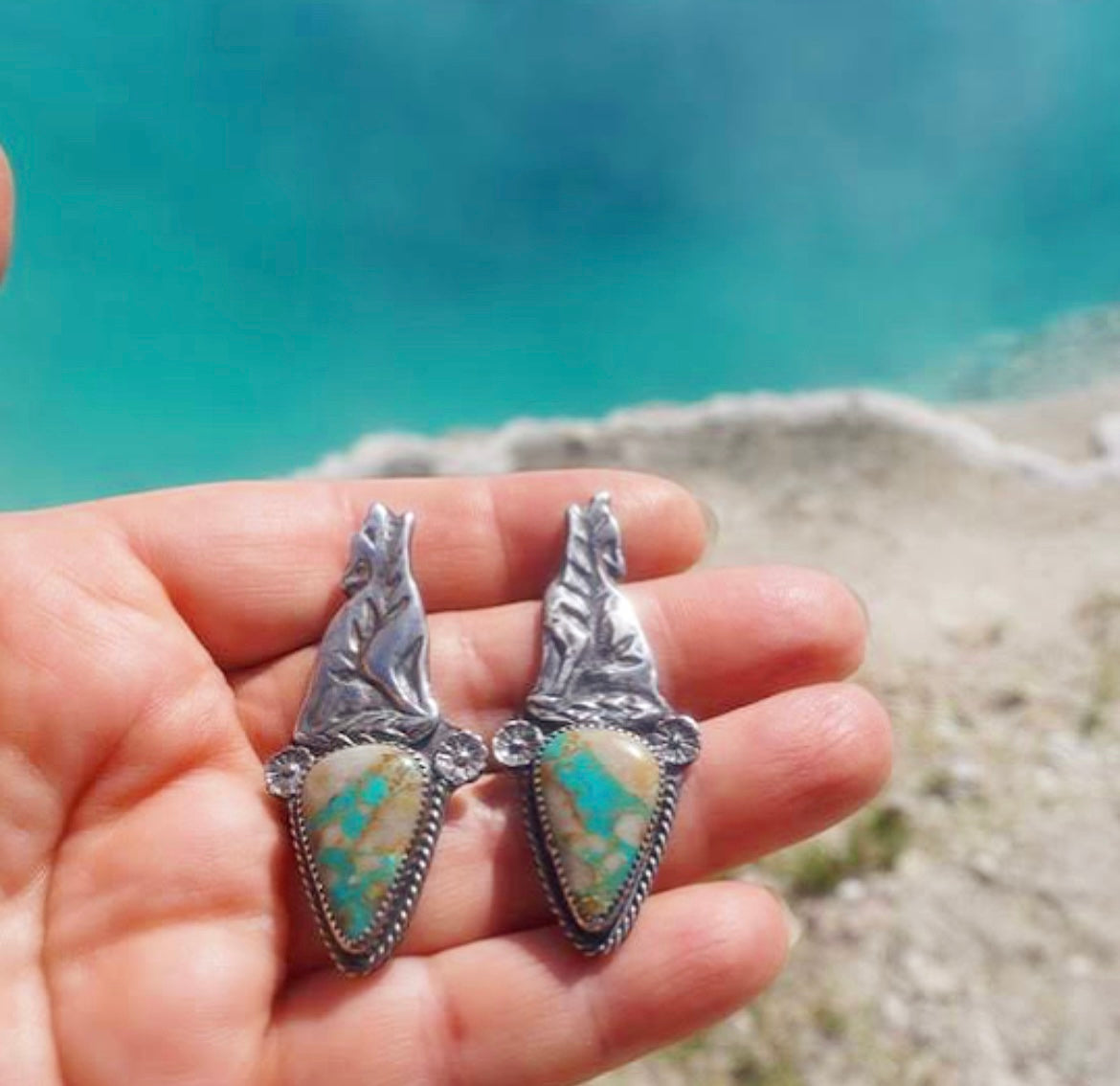Hanna.LA Handmade
Royston Ribbon Turquoise + Wolf Earrings
Royston Ribbon Turquoise + Wolf Earrings
Couldn't load pickup availability
Wolves in Yellowstone
West Geyser Thumb Basin--- Black Pool: Just as the boardwalk leaves Yellowstone Lake’s shore is Black Pool, on the left. This pool used to be black from all of the bacteria mats underneath. However, the water temperature rose dramatically in 1991. Now it is a stunning clear and deep blue pool.
The wolf, one of Yellowstone’s most important predators, roamed the landscape and influenced the ecosystem for thousands of years. By the late 1920s, wolves were eradicated from Yellowstone in an effort by the U.S. government to tame the wilderness. Along with the removal of other carnivores like cougars and bears, this action had a profound effect on Yellowstone. In the absence of carnivores, elk numbers boomed which resulted in significant changes in vegetation. Beavers became increasingly rare, and food web dynamics were significantly altered. With the loss of the wolf, the park was missing a keystone species that altered the structure and function of the entire ecosystem.
Starting with the watershed Endangered Species Act in the 1970s, and finally in 1995 with all the pieces in place, fourteen gray wolves were captured in Canada and relocated to Yellowstone’s Lamar Valley. In 1996, 17 more Canadian wolves were brought into the park, followed by 10 wolves from northwestern Montana in 1997. The wolf population grew quickly, as pack territories and breeding pairs were established.
This monumental undertaking marked the first deliberate attempt to return a top-level carnivore to a large ecosystem. The impacts of wolf recovery have been significant. With their return, Yellowstone’s large carnivore community is fully restored and wolves are once again playing a critical role in Yellowstone’s natural ecological processes.
Share




